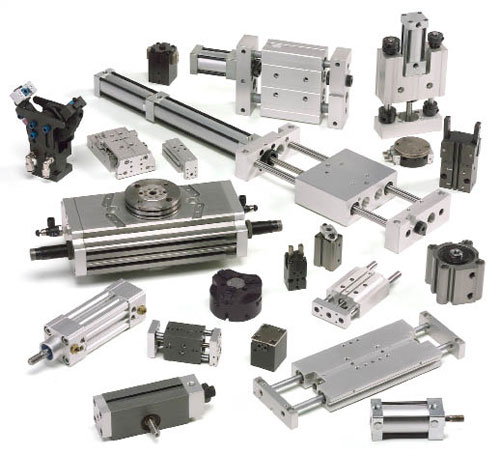Our site here at linearmotiontips.com is part of the Design World Network. So, while we house an extensive online library covering linear-axis motion in technical articles, our sister site at motioncontroltips.com contains an equally useful lineup. Here are three technical articles from that site that relate to linear motion, plus another from pneumatictips.com. Enjoy.
Linear-motion article number one:
What are Linear Motion Bearings? Technical Summary
This article summarizes bearings that use bushings, pads, or roller arrays to bear loads along a rail. It also outlines considerations for length, modes of actuation, and accuracy.
Linear-motion article number two:
What is Linear Motion Design Engineering? Technical Summary
This article compares three linear-motion permutations — linear motors (a precision option for many semiconductor, aerospace, and medical applications), linear actuators (consisting of traditional motion components), and the linear rolling guides upon which many linear systems are based.
Linear-motion article number three:
Electric actuators: More choices for more applications
 This recently updated piece summarizes pre-engineered linear actuators sold for designs that excel with self-contained “electric muscles” for set axes.
This recently updated piece summarizes pre-engineered linear actuators sold for designs that excel with self-contained “electric muscles” for set axes.
It covers the latest developments for linear-actuator technologies as well — including how the cost for electric-actuator drives have come down (allowing engineers to use them in all-new applications) even while the range of offerings continually expands.
Industry experts Aaron Dietrich (of Tolomatic) and Ernst Blumer (of LinMot) lend their expertise and observations to this article as well.
Linear-motion article number four:
What are rodless pneumatic cylinders and slides?
 This last article from our sister site — pneumatictips.com — explains pneumatic cylinder slides and rodless cylinders. Unlike some other electric options (as well as standalone pneumatic cylinders) they drive linear motion and support loads.
This last article from our sister site — pneumatictips.com — explains pneumatic cylinder slides and rodless cylinders. Unlike some other electric options (as well as standalone pneumatic cylinders) they drive linear motion and support loads.
Useful for delivering load advancements on axes via non-rotating platforms, they excel in horizontal applications where side load is a problem (as in pick-and-place setups, for example).
As author Paul Heney explains, cylinder slides work in designs needing longer travel distances, or when the overall length must be minimized due to space constraints … as in conveyor stops, part ejection and positioning, safety doors, and industrial curtains. Often, designs need the slide to carry side loads and resist rotation.
Related linear-motion videos:
Linear motion is an area of motion control encompassing several technologies including linear motors, linear actuators …
Skip the linear bearing and lead screw, glide screws are both
In this video, Lisa Eitel and Miles Budimir, motion editors with Design World, explain how a Thomson Glide Screw works. This is a sort of high-tech linear-motion Frankenstein.
A closer look at Lo-Pro linear motion components
Here’s an overview of the components you can use to develop linear motion carriages and sliders. BWC offers a range of components to give you the exact motion you need for your linear applications.








Leave a Reply
You must be logged in to post a comment.